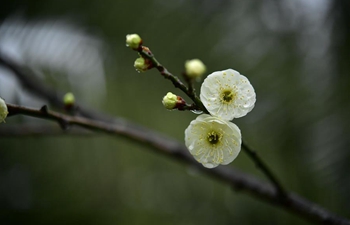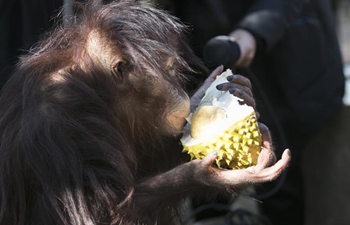BEIJING, Jan. 28 (Xinhua) -- Chinese researchers have found that locusts can send an olfactory signal when forming large swarms, which can be converted to a toxic chemical to facilitate their defenses against natural enemies.
Locusts have many natural enemies, but when their populations become dense few like to prey on them. Eating locust swarms can cause discomfort in poultry.
Animal aggregation occurs frequently in nature and encompasses a broad range of scales, from small groups to large ones comprising millions. The benefits of aggregation include gains in foraging efficiency, shelter and group defense. However, aggregation also places individuals at a high risk of exposure to predators.
Swarms of locusts have devastated crops and been a contributory cause of famines and human migrations. Since the 20th century, efforts have been made to control the insects.
Previous studies show that locusts might use warning coloration associated with toxic extracts from food plants for self defense.
However, scientists are not sure how the warning signals function and how the toxins form in locusts.
Researchers from the Institute of Zoology of Chinese Academy of Sciences found that the phenylacetonitrile (PAN) is a volatile compound detected in all tissue and body fluids of locust swarms, but is absent in single locust.
The compound is very sensitive to the changes of population density. The PAN release amount is significantly reduced when locusts are dispersed, but it could be sharply increased after swarming, according to the study.
PAN is catalyzed by a novel gene in locust swarms. When locusts are attacked by birds, PAN will be converted to the highly toxic chemical hydrocyanic acid, which can cause food poisoning in birds.
To test whether PAN production by locusts affects bird predation, researchers performed a series of tests involving locusts with or without PAN load.
They found that the great tit, an enemy of the locust, refused to attack and feed on solitary locusts injected with PAN, while swarms without PAN became vulnerable to birds.
The findings have been published in the international journal Science Advances.
Kang Le, lead researcher of the study, said the findings suggested that PAN produced by locust aggregation reduced bird predation and served as a warning signal for locust defense.
It may also inspire the development of new strategies to control outbreaks of agricultural pests.

















